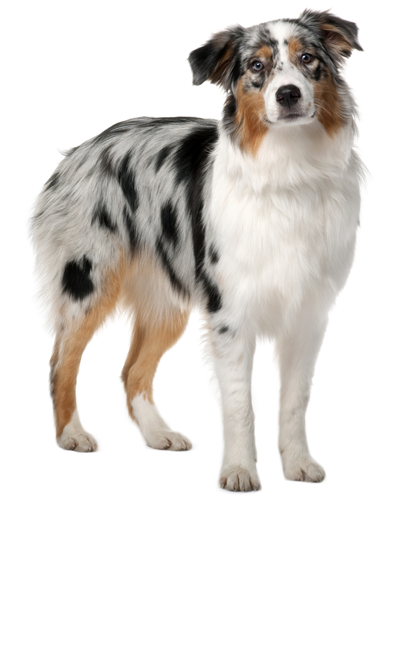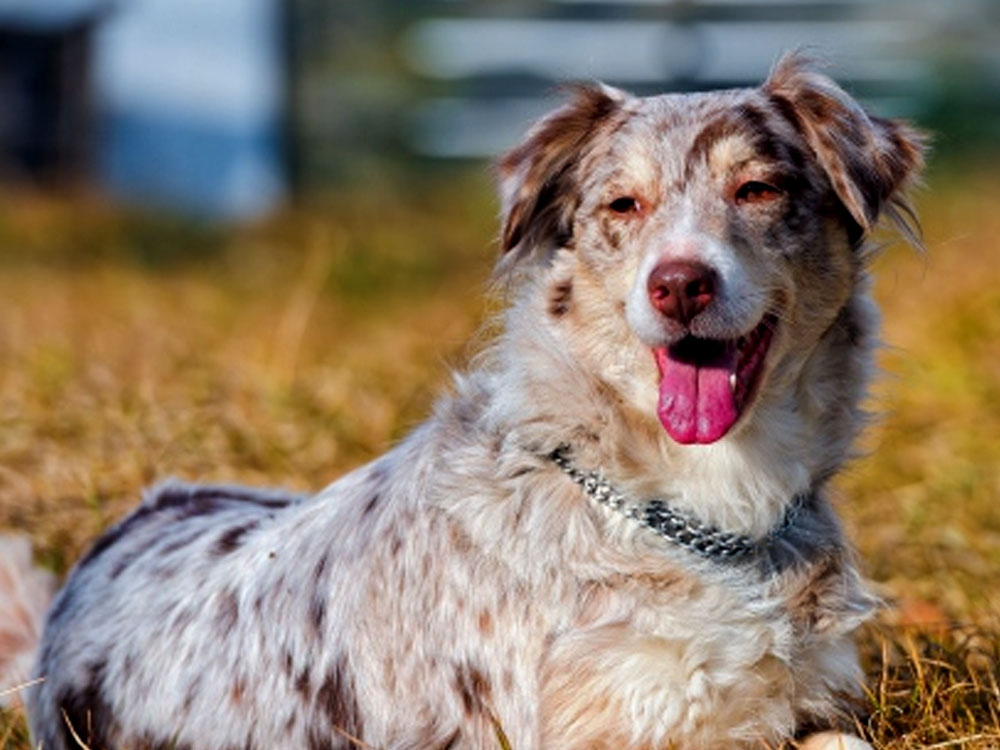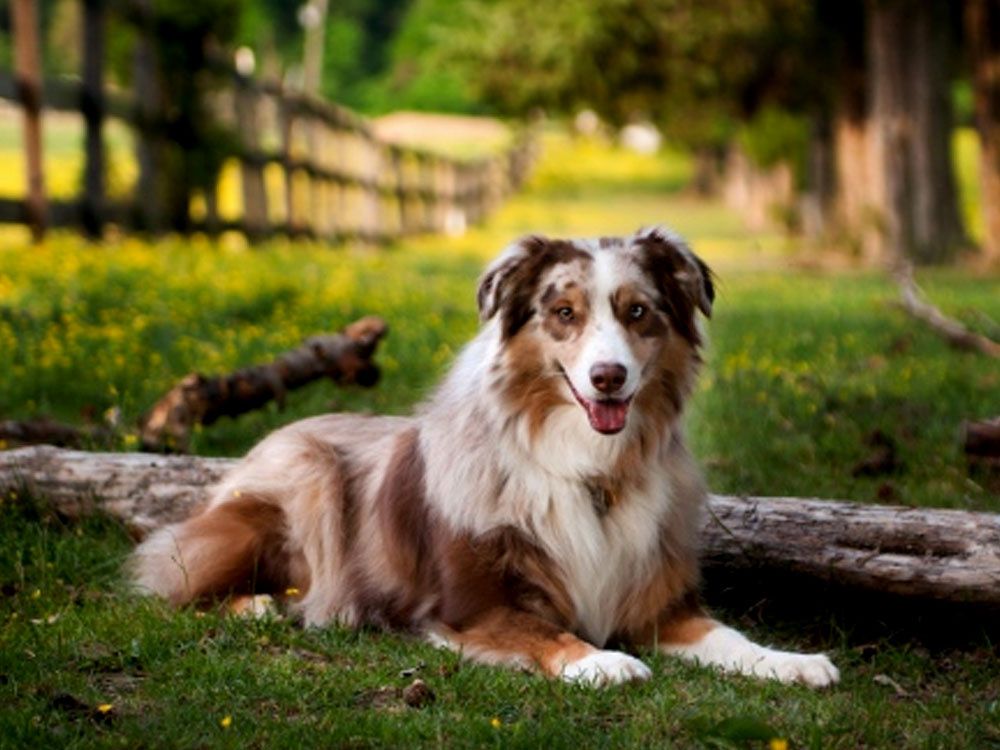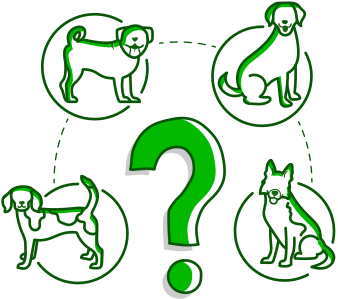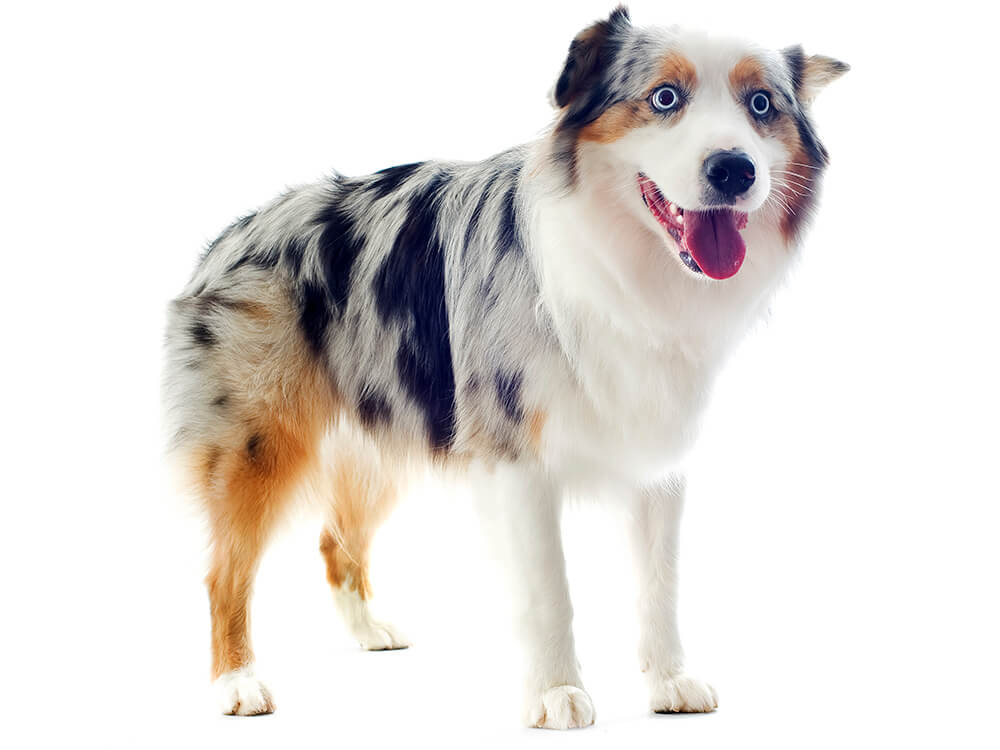
Australian Shepherd Breed Pictures
Vital Breed Stats
| Height: | 51 - 58 cm M | 46 - 53 cm F |
| Weight: | 23 - 29 kg M | 8 - 10 kg F |
| Breed Group: | Hound Dog Group |
| Life Expectancy: | 13 - 15 years |
| KC Registered: | No |
Breed Characteristics
| Size: |  |
| Grooming: |  |
| Exercise Level: |  |
| Barking Level: |  |
| Good with Children: |  |
| Good with other pets: |  |
| Affectionate: |  |
| Protective: |  |
| Cost to Keep: |  |
Give a thumbs up if you love the Australian Shepherd

0
More About the Breed
History
Appearance
The Aussie is a medium-sized muscular working dog with high endurance and stamina. It stands 18–32 centimetres at the withers and weighs 40–60 pounds. It has a strong neck, triangular medium ears, and strong jaws.
It has a medium-length, water-resistant coat to withstand rain and snow. Aussies in cold climates have heavier coats than those in warmer areas. The hair can be straight or wavy with moderate feathering, which is generally low-maintenance. The standard colours are black, red, blue merle, and red merle, with or without white or tan markings. The colours should be dominant and rich, and white should not overpower in the head.
Grooming
Shedding is year-round but becomes heavier in the spring. Weekly brushing is needed to remove dry hair and mats. Baths are only necessary a few times a year especially if it is regularly brushed.
Other than taking care of the coat, be sure to regularly trim nails, clean ears, and check for ticks or fleas as well. One overlooked aspect of dog ownership is maintaining good oral hygiene. Take care of your dog’s teeth and gums to prevent disease and bad breath by brushing them at least twice or three times a week.
Temperament
Intelligence
The Australian Shepherd is intelligent, loyal, alert, and energetic. Its flexible and agile body allows it to easily change its speed and direction. It has a balanced disposition towards strangers. It can be aloof but never shy or hostile. Since it has been developed to guard farms and ranches, it has guarding behaviour and tends to bark when it is suspicious.
Breeds may be predisposed to have certain characteristics in terms of temperament and intelligence. However, like humans, each dog is unique. Factors like genetics, environment, and socialisation play a role in developing its personality and abilities.
Nutrition
The Aussie, known as a highly active dog, requires more protein than carbohydrates to be able to support its energy requirements. Protein is an important component that helps build muscles.
Typical calorie needs of an adult Australian Shepherd per day:
- Senior and less active: up to 1,070 calories daily
- Typical adult: up to 1,310 calories daily
- Physically active/working dog: up to 2,085 calories daily
Feeding
Health
Exercise
Cost of Ownership
If you are looking to own an Australian Shepherd dog anytime soon, you have to prepare for financial adjustments. For example, buying an Australian Shepherd puppy will cost anywhere from £500 to £900. It will cost more if you buy from a reputable breeder. Then, the next thing to consider is food. Premium-quality dog food for an Aussie will be around £40–£60 a month. This does not include treats.
Insuring an Aussie will prove a bit costly depending on the type of pet insurance you will avail. For a basic cover, prepare to spend over £20 a month, whilst it will cost about £45 for a lifetime policy cover. Costs to cover veterinary consultations and initial vaccinations is another thing, which will quickly set you back £1,000 a year, including boosters and the cost to neuter. It is estimated that an Aussie dog owner will roughly spend a total of £90–£120 a month to care for this dog breed.
Is an Australian Shepherd Right for You?
- The Australian Shepherd is intelligent, loyal, alert, and energetic.
- It has a medium-length, water-resistant coat that can withstand rain and snow.
- Shedding is year-round but becomes heavier in the spring, therefore weekly brushing is needed to maintain its coat.
- The breed is intelligent and highly energetic, and was originally bred to guard farms and ranches.
- It requires least two hours of daily exercise and play.
